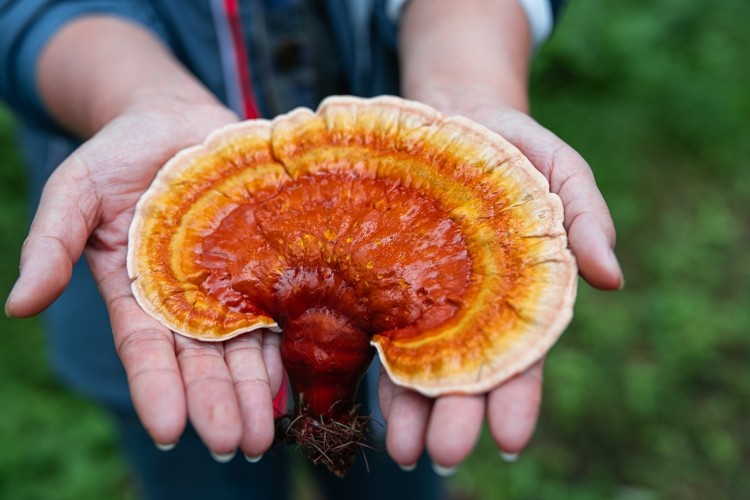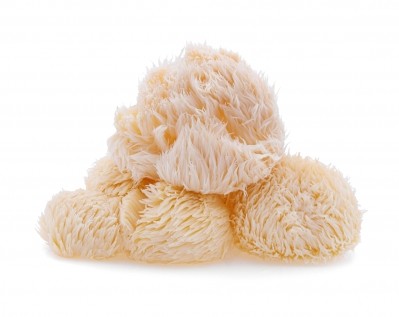Guest Article
In a crowded market there is no ‘shroom’ for legal mistakes

Mushrooms have been gaining mass appeal with the likes of ‘Magic medicine’ and ‘Fantastic fungi” making it to the big screen and Netflix audiences alike. So, is this the time for Mushrooms to make it big on the healthy foods market?
It is some 16 years since I wrote an article for Function Foods & Ingredients magazine (Newhope Media, Boulder) titled “Mushrooms' healthy potential for nutraceuticals”, so the category must be worth another look. Since 1995 we have had almost exponential growth in scientific literature with 144 peer publications in 1995 to over 1889 publications in 2021.
To put this another way an increase of over 1,200%. Even the NY Times have jumped in on the interest naming mushrooms as ‘ingredient of the year’ (Severson K, NYT, Jan 2022)
Market potential equals market demand
Recent analysis puts the global function mushroom category at $24.9bn, with a CAGR of 9.5% expected to reach $47.2bn by 2028 (Grand View Research, 2022). That’s a growth rate that outperforms the darling of M&A, the sports nutrition category at only 7.9% over the same period (Verified Market Research, 2022).
This growth can be put down to a few key categories that have continued to develop of the back of COVID and more recently the increasing stress due to inflation and other income pressures such as fuel / energy costs. These include immune health (Shin et al. 2019; Vascellari et al 2021), stress (Bao et al. 2017) and sleep (Yao et al 2021).
The take home is such growth rates are bolstering the need for new and innovative products to meet potential consumer demand and companies are becoming more interested in this whole category.
Legal challenges remain but so do opportunities
Regulators in Germany now have their own specific sub-working working group on mushrooms (Die Unterarbeitsgruppe (UAG) Pilzliste) that met for the 1st time in March this year. Moving forward, the discussion will be based around safety and how that may relate to what can be put in your products and that means increasing scrutiny and a need to ensure what you formulate with is safe.
With over 30 edible mushrooms permissible in the EU then the choice of not only the specific mushroom but also its benefits can be explored to create a unique formulation.
Speaking of regulations, take care in what mushrooms and form is used or you may fall foul of the novel foods regulations. Shiitake, Agaricus blazei, Coprinus comatus, and Reishi have all been assessed in accordance with Article 4 of the novel foods regulation. In consideration of Reishi, it is clearly not novel as an intact food. However, the application on Reishi was to determine if the mycelium when dehydrated and powdered was novel. The conclusion is it was. That means mycelium powder from Reishi is illegal for use in the EU unless a safety dossier is submitted to the relevant authorities and approval for food use granted.
This should be a warning to food business and manufactures alike - they must ensure what they place on the market is compliant if under their control. If compliance is found wanting, they maybe libel to prosecution under the novel foods regulations. In some member states the fines alone are significant with Slovenia imposing as much as 10% of turnover or up to €1.6mn. We have already had 3 cases over the past 12 months of companies issued stop notices for the sale of products with such novel mushrooms. It’s clear for some authorities it’s on their radar.
Beyond formulation consideration food businesses need to communicate the benefits to consumers. Indeed, in the EU on-hold of health claims permit a number of health claims for mushrooms to be made including immune support and cholesterol for Reishi (Ganoderma lucidum) mushrooms. Of course, this is where a good scientist and formulator is needed to ensure the claims can be supported based on the science and the final dose in the product.
Summary
As a source for new formulations and health foods we may see the move from generic white and button mushrooms on our pizza to high protein pizza fortified with immune boosting Reishi or Shiitake. Or we may see an increasing interest as functional ingredients in their own rights as independent or adjuncts to those ingredients that are already permitted to make immune health claims.
What is clear is mycology has taken a step up since my first article on the issue some 16 years ago and is now become increasingly mainstream. Its time now for industry to invest and begin some real research that can commercialise the benefits of these untapped natural products.
References
Bao et al. "Griflola frondosa (GF) produces significant antidepressant effects involving AMPA receptor activation in mice". Pharm Biol. 2017;55(1):299-305
Grand View Research. Functional Mushroom Market Size, Share & Trends Analysis Report by Product Type (Reishi, Cordyceps, Lions Mane, Turkey Tail, Shiitake, Chaga), By Application, By Region, And Segment Forecasts, 2022 – 2028. Accessed online 20th August at: https://www.grandviewresearch.com/industry-analysis/functional-mushroom-market-report
Shin et al. "The Effects of AHCC®, a Standardized Extract of Cultured Lentinura edodes Mycelia, on Natural Killer and T Cells in Health and Disease: Reviews on Human and Animal Studies". J Immunol Res. 2019;2019:3758576
Verified Market Research. "Global Sports Nutrition Market". Accessed online 20th August at: https://www.verifiedmarketresearch.com/download-sample/?rid=23162
Vascellari et al. "Antiproliferative and antiviral activity of methanolic extracts from Sardinian Maltese Mushroom (Cynomorium coccineum L.)" Nat Prod Res. 2021 Sep;35(17):2967-2971
Yao et al. "Ganoderma lucidum promotes sleep through a gut microbiota-dependent and serotonin-involved pathway in mice". Sci Rep. 2021;11(1):13660.








